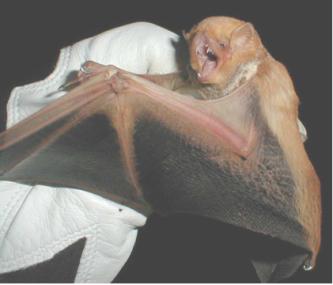
Courtesy Catalina Island Conservancy
Myotis bat… myotis bat… another myotis bat. But wait, what’s that?
Based on acoustic data, the first new bat species in 20 years has been detected on Catalina Island. A bat monitor placed at Wrigley Memorial & Botanic Garden by Catalina Island Conservancy has picked up acoustic data from a red bat. The presence of red bats brings the total number of bat species on the island to nine.
“Detecting a species that’s new to the island is incredibly exciting,” said Conservancy Wildlife Biologist Emily Hamblen. “There has been bat research on Catalina Island since the 1970s, and this is the first time the red bat has been detected.”
On four separate evenings, acoustic monitors picked up signals from red bats. More research is needed to determine whether or not this is a new visiting species to the island and whether or not they are year-round residents or migrants.
“There is intrinsic value in knowing what your ecosystem is made up of and, because of this monitoring, we know more about our ecosystem now than we did six months ago,” said Hamblen. “Generally, greater species diversity leads to greater ecosystem resiliency.”
The Conservancy installed two acoustic bat monitoring stations in May of 2019 thanks to a grant from the Donald Slavik Family Foundation. Data from these stations is collected by Conservancy biologists and run through software that makes automatic preliminary identifications to determine the species of bat. The scientists then take a closer look at the data.
“The first 500 or so are usually myotis, so I can get through those very quickly,” she added. Myotis are the most common bats circling the skies of Catalina. “Then I came across a few that were less clear. When I find multiple that are similar, I send a sample to the bat experts we work with who help confirm species IDs.”
With their help, the Conservancy determined the presence of the ninth bat species on Catalina Island. Red bats have been detected on three other Channel Islands including San Nicolas, Santa Cruz and San Miguel. There are more than 1,300 bat species around the world that play an essential part in ecosystems. Many bat species primarily consume insects, taking on the ecological role of pest control, while other bats are pollinators.
“We just passed one year of data collection, which is so exciting,” said Hamblen. “I have a feeling that if we keep looking, we’ll be able to discover so much more and understand how these species use the island.”









